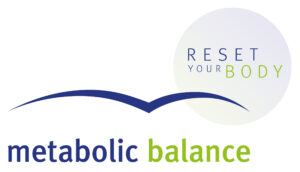Metabolic Balance® vs Keto vs Intermittent Fasting
There are a lot of ways of eating paleo, keto, macro, micro, vegan, the list goes on and on. We need a way to just live our lives and be healthy. It is a challenge to keep really restrictive diets such as intermittent fasting and ketogenic, going long term. The benefit of learning to feed yourself through your Metabolic Balance® program allows you to sustain a healthy lifestyle.
What is a Ketogenic diet?
A ketogenic diet takes the body to a state of ketosis. Ketosis is the process in the body that takes fat and turns it into glucose (sugar) for the body to use for energy. This is achieved by limiting carbohydrate intake to 20-50 grams per day and consuming a large amount of fat and limited amount of protein.
What is intermittent fasting?
Intermittent fasting is not eating for a certain length of time. Then eating for a certain time. It doesn’t focus on what you’re eating as much as when you’re eating it. There are several ways of doing this
- Time-restricted eating. Involves fasting every day for 12 hours or longer and eating in the remaining hours. A popular example is the 16/8 method. It features a daily 16-hour fast and an 8-hour eating window wherein you can fit in 2, 3, or more meals.
- The 5:2 diet. The 5:2 diet involves eating as you normally do 5 days of the week and restricting your calorie intake to 500–600 on the remaining 2 days.
- Eat Stop Eat. Eat Stop Eat involves a 24-hour fast once or twice per week.
- Alternate-day fasting. With alternate-day fasting, the goal is to fast every other day.
- The Warrior Diet. The Warrior Diet was among the first popular diets to include a form of intermittent fasting. It involves eating small amounts of raw fruits and vegetables during the day and eating one large meal at night. [1]
There are benefits and drawbacks to these diets of long periods of fasting and ketosis.
Intermittent fasting is practiced with a ketogenic diet to get into ketosis faster but doesn’t have to be. It was originally used as a treatment for epilepsy in children. [2] The ketogenic and intermittent diet can help reduce insulin levels, reduce inflammation, and lose weight.
However, there are 7 risks of the ketogenic diet. [3]
1. Keto flu, flu-like symptoms that can occur when the body adjusts to the ketosis state.
- Stress of the kidneys. There is a higher risk of kidney stones. Keto diet reduces the amount of citrate released in the urine, and the acid builds up in the blood
3. Reduction of fiber can change the bacteria in the gut, and increased constipation is reported.
- Risk of nutrient deficiencies any time people have to take supplements to avoid this.
- Dangerously low blood sugar numbers.
- Bone health. The mineral density can be reduced.
- Possible risk of chronic disease. Thyroid function has been found to be altered with long term use of the ketogenic diet and one study suggested supporting those on it with thyroid medication.
What is Metabolic Balance®?
Metabolic Balance® is a personalized nutrition plan that gives your body all the nutrients it needs to produce all the hormones and enzymes to balance your metabolism.
Using complex carbohydrates (fruits, vegetables and whole grains) and a variety of proteins, blood sugar is slowly raised so insulin is not spiked. On average when the body takes in more than 400g of carbs per day it will store the rest as fat to be used when fasting times occur. But in our society, there is no fasting going on.
There are 8 strategies for success that Metabolic Balance® uses. You learn more about these in coaching your plan.
Metabolic Balance® strategy 2 of 8 is to have 5 hours between each meal, and 6 of 8 is we are done eating by 9 pm so that we have a longer fast throughout the night. By preventing the spiking of insulin inflammation production is reduced and that will reduce fat cell production and increase fat cell breakdown. The fruit and vegetable provide so much fiber to the body it helps it to keep the colon healthy and reduce cholesterol levels.
Metabolic Balance® success also comes from the variety of proteins and keeping acid down through strategy 5 of 8 by only having one protein per meal per day 3 meals total in a day. Keeping acid levels down will help to keep bone health. We use calcium to reduce acidity in the body and that calcium can come from the bones.
Insulin level control, high fiber, low acidity, variety of proteins and the intermittent fasting help the body to return to a healthy weight and improve function overall.
We are happy to answer your questions and help you to start your journey of a balanced approach to renewed health with FMC Coaching. Book a Discovery Call today.
References
Let's Talk
Let’s take 30 minutes to chat for a FREE Discovery Call to answer your questions and take the next steps to building your health!

